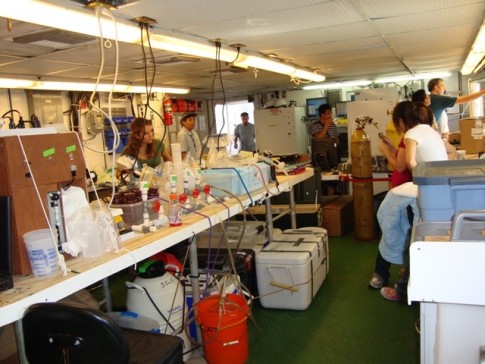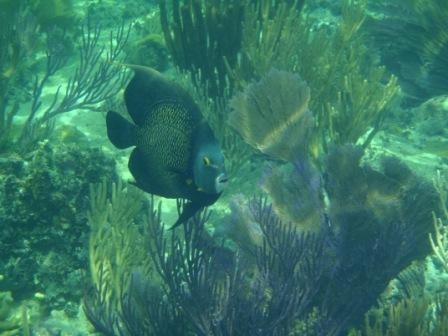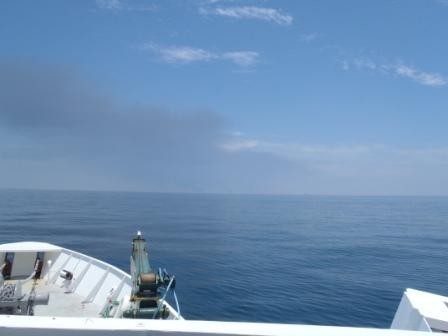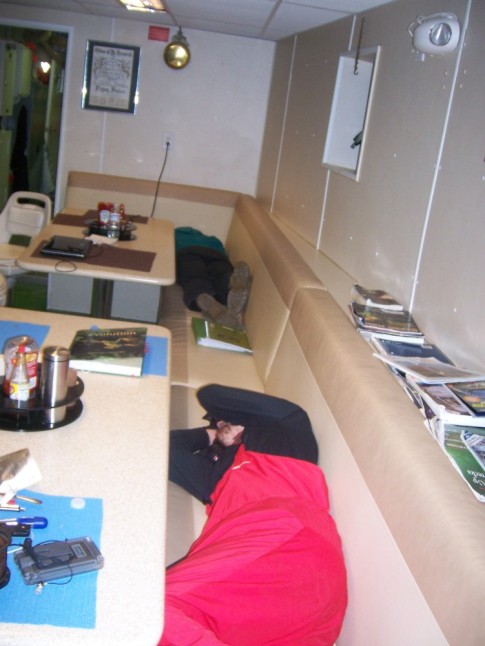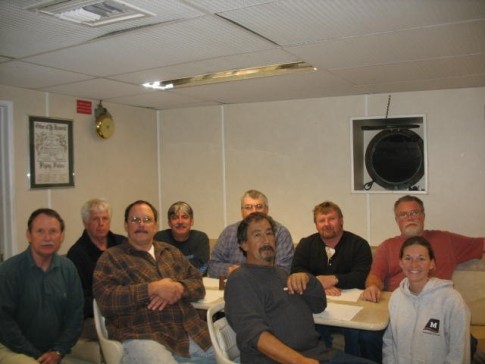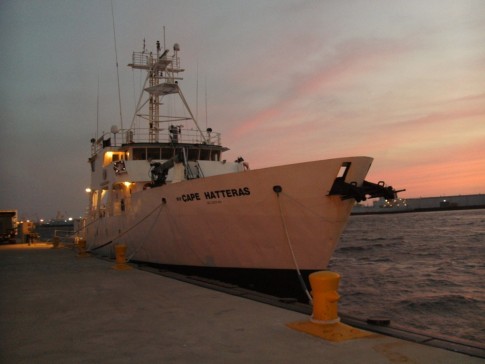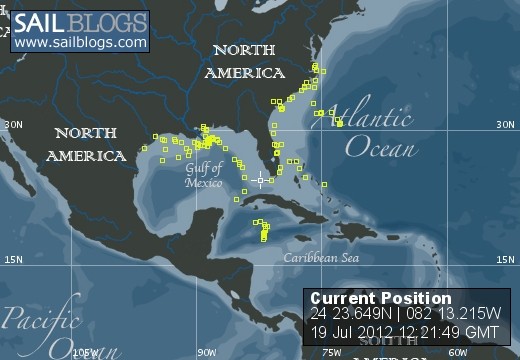
Research Vessel Cape Hatteras
The R/V CAPE HATTERAS is owned by the National Science Foundation and operated under a renewable Charter Party Agreement by the Duke/UNC Oceanographic Consortium. Her homeport is at Duke University Marine Laboratory in Beaufort, North Carolina.
11 March 2013
01 February 2013 | Beaufort, NC
14 January 2013
14 January 2013
19 July 2012 | Straits of Florida
19 July 2012
04 July 2012
15 November 2011 | East Flower Garden Banks, Gulf of Mexico
06 November 2011 | East Flower Garden Back, Gulf of Mexico
05 November 2011 | Gulf of Mexico
27 August 2011 | North Charleston, SC
26 August 2011 | North Charleston, SC
25 August 2011 | off SC coast
23 August 2011 | off the coast of NC
23 August 2011 | Off the coast of NC
06 August 2011 | Gulf of Mexico
05 August 2011 | GUlf of Mexico
30 June 2011 | Gulf of Mexico
30 June 2011 | Charleston, SC
25 May 2011 | Mission Annelid: Success
USGS blogs 7 & 8
30 September 2010 | Gulf of Mexico
Cheryl Morrison & Martha Nizinski
http://fl.biology.usgs.gov/DISCOVRE/discovre_2010/discovre_2010-9-28.html
Cruise Log: 9/28/2010
Genetic connectivity between Gulf and Atlantic Lophelia populations
Cheryl Morrison
One of the themes that tie many of our research objectives together is 'connectivity', or the extent to which spatially separated populations are linked through the exchange of juveniles or adults (link to connectivity blogs from 10/3/08 and/or 9/17/09). Since it is difficult to directly observe movements of Lophelia larvae as they travel with currents between reef areas (link to Lophelia larvae blog 9/23/09), we use other methods such as genetic markers to assess how closely related these reef areas are.
Oceanographic setting of our study sites
We originally thought that Gulf and Atlantic Lophelia populations would be highly connected since the Gulf of Mexico Loop Current meets the Florida Current in The Straits of Florida and then the Gulf Stream, potentially providing a means of transport for Lophelia larvae between the Gulf and the Atlantic regions. Data from genetic markers suggest that northern Gulf Lophelia populations are well connected to each other. However, Atlantic populations appear isolated from the Gulf. Closer examination of Gulf currents suggests that reefs in the northern Gulf, such as the Viosca Knoll reefs we just visited, lie to the north of the general flow of the Loop Current and are not transported southward toward the Straits of Florida. Instead reefs like those at Viosca Knoll may be influenced more by Loop Current eddies that may transport larvae westward (Figure 1). Conversely, populations sampled from off the coast of southern Florida (Miami and Cape Canaveral) have a mixture of Gulf and Atlantic genetic signatures.
The West Florida Slope Lophelia reefs
Our next stop is the West Florida Slope (link to blog 9/18/09). The Lophelia reefs in this area are of great interest to our connectivity studies because several currents meet in this location making circulation patterns extremely complex. The West Florida Slope is influenced by the Loop Current; therefore, the potential for these reefs to receive larvae from the Caribbean Sea and provide larvae to the western Atlantic Ocean is high. We hypothesize that the Lophelia reefs on the West Florida Slope may have a mixed genetic background, with individuals recruiting to this region from the Gulf and Atlantic as we have seen in the Atlantic populations. On our first dive, several scientists have made the observation that the deep reefs on the West Florida Slope appear more similar to those off the east coast of Florida rather than those of the northern Gulf. For example, there are coral species common here that we don't see at Viosca Knoll, such as the colonial coral Madrepora oculata and the solitary coral Thecopsammia socialis (Figure 2). Glass sponges are more common, as well as stylaster (lace) hydrocorals. We have a lot left to learn about the biodiversity at this interesting area. Sampling Lophelia populations from the West Florida Slope will help us to better understand the complex interactions between Lophelia reefs in neighboring ocean regions.
---------------------------------------------
http://fl.biology.usgs.gov/DISCOVRE/discovre_2010/discovre_2010-9-29.html
Cruise Log: 9/29/2010
New information and the value of sampling over multiple years-plus new information on my favorite crabs
Martha Nizinski
Despite a temporary set back with loss of the manipulator arm on the ROV, sampling continues to go well. We have had great success collecting individuals of my favorite group of organisms, the galatheid crabs. These crabs, also known as squat lobsters, are extremely diverse and are frequently found in deep-sea ecosystems. In fact, species in the genus Munidopsis are common in extreme environments such as seeps and hydrothermal vents and are frequently associated with deep-sea coral habitats. The majority of our collections this year have been members of the genera Munidopsis and Munida. We have collected a few species of Munidopsis that we have not seen previously at these sites. Additionally, this is the first year we have collected multiple individuals of several species of Munida. One of the reasons for this is that we have concentrated some of our efforts in the soft sediments, the preferred habitat for Munida, adjacent to the coral habitat this year. The information we collect will allow us to determine if the assemblages of organisms that are associated with corals are different from those animals found on soft sediments.
We have visited the Vioska Knoll sites each year of this project, and each year we observe something new or collect a species we have not seen previously. We continue to learn more about the diversity of this area with each dive thus reinforcing the fact that one dive or one visit at a site is never enough. These are complex systems with many microhabitats that require multiple methods of sampling to uncover the diversity hidden within the coral matrix, found next to the coral mound or on the soft sediments adjacent to the coral habitats. Each trip we try to investigate new sections of the coral habitat and make observations on what species are associated with the corals, how individuals are distributed on the coral mound, and whether there are new combinations of species associated with these environments.
We have arrived at the west Florida Slope and have completed our first day of sampling. This looks to be a very interesting area; quite different from the Vioska Knoll sites and more similar to sites we have sampled in the Atlantic in terms of coral-reef species composition. We are watching the weather carefully. Hopefully the tropical weather will stay far enough away that we can continue sampling this amazing site.
Cruise Log: 9/28/2010
Genetic connectivity between Gulf and Atlantic Lophelia populations
Cheryl Morrison
One of the themes that tie many of our research objectives together is 'connectivity', or the extent to which spatially separated populations are linked through the exchange of juveniles or adults (link to connectivity blogs from 10/3/08 and/or 9/17/09). Since it is difficult to directly observe movements of Lophelia larvae as they travel with currents between reef areas (link to Lophelia larvae blog 9/23/09), we use other methods such as genetic markers to assess how closely related these reef areas are.
Oceanographic setting of our study sites
We originally thought that Gulf and Atlantic Lophelia populations would be highly connected since the Gulf of Mexico Loop Current meets the Florida Current in The Straits of Florida and then the Gulf Stream, potentially providing a means of transport for Lophelia larvae between the Gulf and the Atlantic regions. Data from genetic markers suggest that northern Gulf Lophelia populations are well connected to each other. However, Atlantic populations appear isolated from the Gulf. Closer examination of Gulf currents suggests that reefs in the northern Gulf, such as the Viosca Knoll reefs we just visited, lie to the north of the general flow of the Loop Current and are not transported southward toward the Straits of Florida. Instead reefs like those at Viosca Knoll may be influenced more by Loop Current eddies that may transport larvae westward (Figure 1). Conversely, populations sampled from off the coast of southern Florida (Miami and Cape Canaveral) have a mixture of Gulf and Atlantic genetic signatures.
The West Florida Slope Lophelia reefs
Our next stop is the West Florida Slope (link to blog 9/18/09). The Lophelia reefs in this area are of great interest to our connectivity studies because several currents meet in this location making circulation patterns extremely complex. The West Florida Slope is influenced by the Loop Current; therefore, the potential for these reefs to receive larvae from the Caribbean Sea and provide larvae to the western Atlantic Ocean is high. We hypothesize that the Lophelia reefs on the West Florida Slope may have a mixed genetic background, with individuals recruiting to this region from the Gulf and Atlantic as we have seen in the Atlantic populations. On our first dive, several scientists have made the observation that the deep reefs on the West Florida Slope appear more similar to those off the east coast of Florida rather than those of the northern Gulf. For example, there are coral species common here that we don't see at Viosca Knoll, such as the colonial coral Madrepora oculata and the solitary coral Thecopsammia socialis (Figure 2). Glass sponges are more common, as well as stylaster (lace) hydrocorals. We have a lot left to learn about the biodiversity at this interesting area. Sampling Lophelia populations from the West Florida Slope will help us to better understand the complex interactions between Lophelia reefs in neighboring ocean regions.
---------------------------------------------
http://fl.biology.usgs.gov/DISCOVRE/discovre_2010/discovre_2010-9-29.html
Cruise Log: 9/29/2010
New information and the value of sampling over multiple years-plus new information on my favorite crabs
Martha Nizinski
Despite a temporary set back with loss of the manipulator arm on the ROV, sampling continues to go well. We have had great success collecting individuals of my favorite group of organisms, the galatheid crabs. These crabs, also known as squat lobsters, are extremely diverse and are frequently found in deep-sea ecosystems. In fact, species in the genus Munidopsis are common in extreme environments such as seeps and hydrothermal vents and are frequently associated with deep-sea coral habitats. The majority of our collections this year have been members of the genera Munidopsis and Munida. We have collected a few species of Munidopsis that we have not seen previously at these sites. Additionally, this is the first year we have collected multiple individuals of several species of Munida. One of the reasons for this is that we have concentrated some of our efforts in the soft sediments, the preferred habitat for Munida, adjacent to the coral habitat this year. The information we collect will allow us to determine if the assemblages of organisms that are associated with corals are different from those animals found on soft sediments.
We have visited the Vioska Knoll sites each year of this project, and each year we observe something new or collect a species we have not seen previously. We continue to learn more about the diversity of this area with each dive thus reinforcing the fact that one dive or one visit at a site is never enough. These are complex systems with many microhabitats that require multiple methods of sampling to uncover the diversity hidden within the coral matrix, found next to the coral mound or on the soft sediments adjacent to the coral habitats. Each trip we try to investigate new sections of the coral habitat and make observations on what species are associated with the corals, how individuals are distributed on the coral mound, and whether there are new combinations of species associated with these environments.
We have arrived at the west Florida Slope and have completed our first day of sampling. This looks to be a very interesting area; quite different from the Vioska Knoll sites and more similar to sites we have sampled in the Atlantic in terms of coral-reef species composition. We are watching the weather carefully. Hopefully the tropical weather will stay far enough away that we can continue sampling this amazing site.
Comments
| Vessel Name: | R/V Cape Hatteras |
| Hailing Port: | Beaufort, NC |
| Extra: | |
| Home Page: | www.rvcapehatteras.org |

Port: Beaufort, NC
